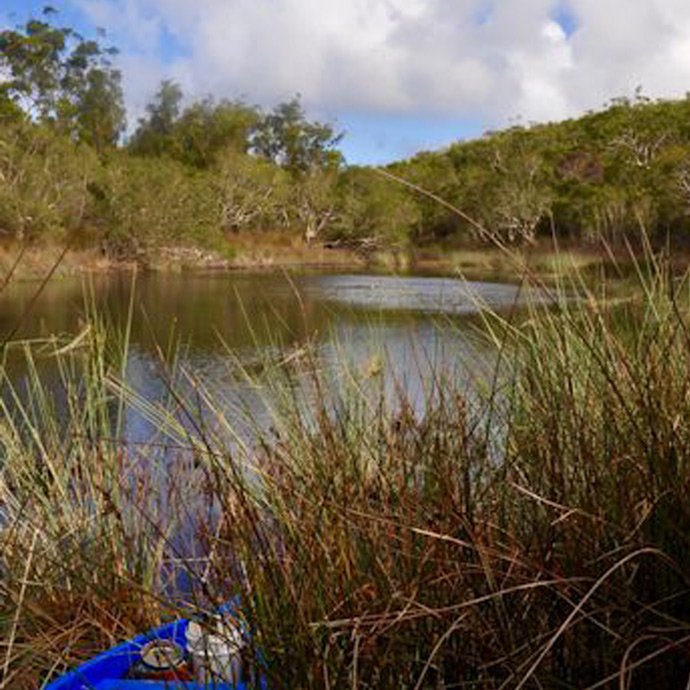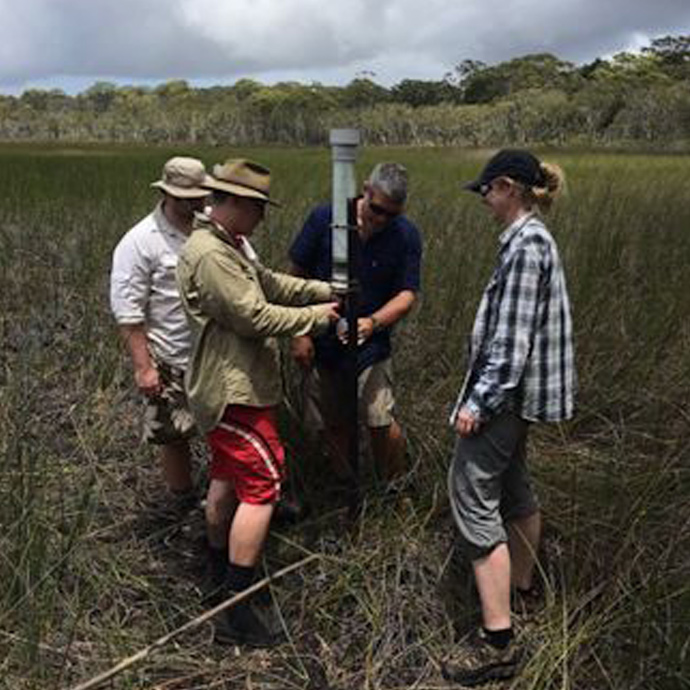Investigating climate and environmental change in eastern Australia
Climate change in Australia could lead to environmental and economic impacts on water security, agriculture, coastal communities and infrastructure.
02/06/2017 By BGS Press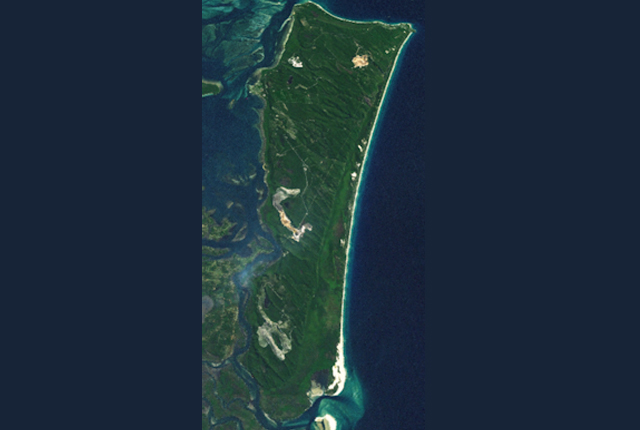
Melanie Leng, director of the BGS and the University of Nottingham’s Centre for Environmental Geochemistry, was invited to visit the University of Adelaide to see what expertise we at BGS and the University of Nottingham could provide in studying recent climate change along the eastern Australian coastal margin.
Climate change is a current hot topic in Australia as it could potentially lead to significant environmental and economic impacts on water security, agriculture, coastal communities and infrastructure. It is important to understand past climate change, especially the causes of past increases in the frequency and intensity of extreme weather events.
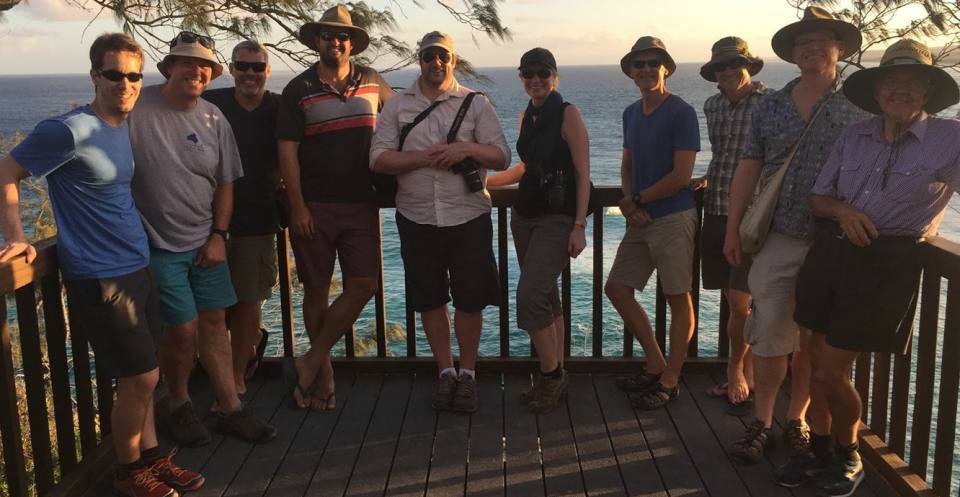
The field team made up of researchers from University of Adelaide, the Queensland government and Melanie Leng ©BGS/University of Nottingham.
North Stradbroke Island
Scientists from the University of Adelaide are working on the past frequency of climate extremes by researching the records of lake sediments. The first week in Adelaide was spent in meetings, talking to researchers about their projects, but probably the most important was the work being done on North Stradbroke Island (or Minjerribah), locally referred to as Straddie.
Straddie is the second largest sand island in the world (24 × 7 miles), and lies off the Brisbane coast. The sand island contains both large and small aquifers, and where these aquifers intersect the sand surface they form small lakes. Sediments have accumulated in these lakes over tens and up to hundreds of thousands of years.
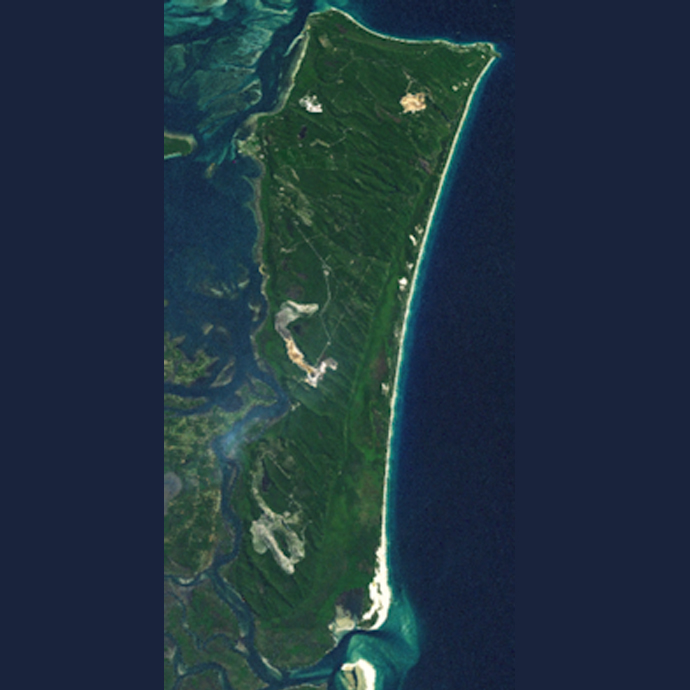
NASA World Wind Landsat montage of Stradbroke Island (courtesy of Wikipedia, public domain).
Lake research
The team visited several of these lakes, including Swallow Lake, Brown Lake (perhaps it got its name from leaching of organic compounds from the peats as the sediments accumulated), and the remarkably resilient Blue Lake, which is thought to be untouched by climate change, to research their potential to accumulate sediments.
Many of the lakes contain ten of metres of organic-rich muds. These muds contain information through time, the oldest being at the bottom of sediment cores extracted from the lakes, while the youngest are at the top. The team are (and will be) analysing some of these sediments for geochemical and biological parameters at BGS. These parameters will tell us about changing water quality in the past that is related to water stress (or how dry the climate was in the past).
Future collaboration
Through our future collaboration we hope that the team involving staff from the University of Adelaide, BGS and the University of Nottingham will be able to make inferences about the controls (local, global, artificial) on the past and future climates of eastern Australia.
Contact
Please contact Melanie Leng for further information.




